
Even before the Droid was launched, Verizon initiated a series of “attack campaigns” targeted at the iPhone. These “iDon’t” ads really helped to delineate the differences between the two companies (Google and Apple) from an Operating System perspective. More recently, other competitive ads initiated by Verizon against AT&T have come under scrutiny since AT&T is making claims that Verizon is misleading consumers in their 3G coverage information. What all this has done, is really raised the hype quite a bit. I particularly enjoyed the “coming soon” ads where Stealth Bombers were deploying payloads across the U.S. that contained single Droids – the Droids being almost alien in nature (can you say mini-Terminators?).
Obviously, quite a lot of thought and energy went into crafting not only the Motorola hardware but also into the launch campaign by Verizon. Even extending the hype by saying the Google Navigation would be available on the Droid was another 1-2 punch against the iPhone.
So my thoughts were to really do a casual head-to-head from a consumer’s perspective (me) against the iPhone. Since the technical comparisons have already been done and redone, I thought that I would highlight some of the important differences (briefly) and then dive into some of the items that are typically important to the average consumer (and business user), specifically:
- Form Factor
- Screen
- Keyboard
- Camera
- GPS/Google Navigation
- App Store
- Android OS
- Email/Calendaring
- Battery Life
- Network
- Sync/Backups
Before going into my analysis, I put together a quick video review that talks about some of my like and dislikes as well as a few of the Droid features:
Tech Comparison
This chart shows some of the quick stats comparing the iPhone 3GS and the Droid:
| Droid | iPhone 3GS | |
| Talk Time | 6.4 hours | 5 hrs (3G) |
| Standby Time | 270 hours | 300 hours |
| Weight | 5.96 oz | 4.8 oz |
| Height | 4.56 in | 4.5 in |
| Width | 2.36 in | 2.4 in |
| Depth | 0.48 in | 0.54 in |
| Resolution | 480×854 | 480×320 |
| Screen Size | 3.7 in | 3.5 in |
| Keyboard | On-screen/physical | On-screen |
| GPS | Yes | Yes |
| Camera | 5 Megapixels | 3 megapixels |
| Autofocus | Yes | Yes |
| Video Recording | Yes – 24 fps | Yes – 30 fps |
| Video Formats | MPEG-4, H.263, H.264 | .m4v, .mp4, .mov, H.264 |
| Geotagging | No | Yes |
| Wi-Fi | 802.11b/g | 802.11b/g |
| Cellular | 800/1900, CDMA EVDO rev A | UMTS/HSDPA (850, 1900, 2100) GSM/EDGE (850, 900, 1800, 1900) |
| Capacity | 16GB SD card | 16/32GB flash drive |
| Bluetooth | v2.1+EDR | v2.1+EDR |
| Accelerometer | Yes | Yes |
| App Store | Android Market | iTunes Store |
| SMS/MMS | Yes | Yes |
As you can see, there isn’t really a big winner here with much of the hardware being comparable or very similar, with the main exception being the screen of the Droid which crushes the iPhone. However, let’s take a look at the other categories.
Form Factor
When I first held the Droid, the first thing that came out of my mouth was “wow, this is heavy”, and this is even in comparison to my iPhone 3GS that has a Mophie Juice Pack Air on it as well. Given that the Droid is crafted out of, what seems to be heavy machined metal, the more I thought about it, the more it made sense. The construction definitely feels very solid (I do worry about it surviving a drop though). The weight is actually 5.96 oz with the battery (compared to the iPhone 3GS which is 4.8 oz)
The body is notched with the screen itself rising above the base. This is because of the keyboard which resides beneath the display. You simply slide the screen out to reveal the keyboard and D-pad. The dimensions of the entire device is about the same as the iPhone but is slightly thicker. It measures: 2.36″ x 4.56″ x 0.54″. The iPhone 3GS is 2.4″ x 4.5″ x 0.48″.
I don’t really like how sensitive the volume buttons are. I frequently turn the Droid to vibrate or no sound without meaning to. There is also a dedicated camera button and some important touch buttons on the button of the screen: Back, Menu, Home and Search. When you click one of those, you get “forced feedback” in the form of a tiny vibration.
Screen
The 3.7 inch Droid sports a 16:9 aspect ratio displaying 400,000 pixels. I must say that the resolution of the Droid is simply amazing. The following screenshots of my blog are taken from the Droid. Do note, there is no “easy” way to take screenshots of what is being displayed on the screen other than installing the SDK and connecting the Droid via USB to your computer and then using a utility therein. All of the screenshots in this review are done in this manner.
I found the Droid’s display to be stellar. The detail is amazing with an accuracy that beats out that of the iPhone in my opinion. The display is 480×854 WVGA (iPhone is 480×320 and 3.5 inches). One thing that I do have to say is that fingerprints do show up much more on the Droid than the iPhone (which has “oleophobic coating”).
The resolution is about 4 times that of the iPhone, and you can really tell that. The letters are so extremely crisp (even the mouse print) that you can read anything on a page. I was actually quite amazed at how crisp it was.
Keyboard
The Droid 1-ups the iPhone by having a full QWERTY physical. Many people will enjoy this capability. I, however, have a differing opinion. The screen slides out of the way to reveal the keyboard as well as a Directional Pad (D-Pad). Also, the Droid has both vertical and horizontal on-screen keyboards (Capacitive Touch) depending on the orientation of the device much like the iPhone. One thing that I did like about the Droid was the “feedback” when touching buttons on the screen – called Haptic Feedback. This gives you a physical sign that you have, indeed, touched a button on the screen. I sort of wish that the iPhone had this feature.
Back to the physical keyboard, some people view this as a requirement in a smartphone. I however, after using an iPhone for a few years now, really don’t see the need to having a physical keyboard. I found the Droid’s keyboard to be pretty awkward for a variety of reason. For starters, the “bubble wrap” keys (where normally the individual keys are raised up, allowing you to touch-type a bit), are actually inverted. I found this to be confusing to the touch. I’m sure that over time, one could get used to this. I didn’t use it enough to really be comfortable with it.
Secondly, because of the D-pad’s existence, the entire keypad is shifted to the left, meaning that when you are holding the Droid, it seems unbalanced when you type. Your left hand is a bit squished and your right is stretched a bit. The positioning is, in my opinion, awkward and I found my hands cramping a bit for extended typing. Using the horizontal on-screen keyboard is much easier. The D-pad, I guess, helps with some games and other navigation, but I don’t think that it is useful enough to warrant shifting the keyboard so dramatically. I did like using the D-pad to fill out forms and moving between fields. However, I would do away with the physical keyboard completely.
Camera
The Droid’s camera is pretty good. It’s a 5.0 megapixel, auto focus camera with dual LED flash and image stabilization built in. You can record video or take photos. In contrast, the iPhone is 3 megapixels, with autofocus (tap to focus) and does video recording as well. Also the iPhone geo-tags your photos and videos, I’m not sure if the Droid does or not, but that can change with Android OS updates.
A word of warning, the Droid’s flash is blinding! So be sure to not be too close to your subject when taking the picture. I think it is great that there actually IS a flash. See the video above for it in action.
You can see side by side comparisons of the Droid vs the iPhone 3GS below. You can make the call as to which one you think is better. Each is good in different ways.
Unfortunately, I did not have time any comparative video samples.
GPS/Google Navigation
Out of many of the Droid features, I think that the inclusion of the Google Navigation (in beta) is awesome. I have been testing various GPS solutions on the iPhone (including the TomTom) and for pure driving directions and functionality therein, Google Navigation is simply amazing. Maps are cached so that you don’t have to worry (that much) if you lose a cellular signal (and the ability to download maps).
However, you get all of the greatness of Google Maps in general, like traffic and satellite views. The BEST thing though, is when you approach your destination, Google Navigation switches to Street View so you see an actual picture of where you are going. This is a great final touch. Street names are spoken as well. It simply works! And, the fact that it is free is the icing on the cake (and a danger for other GPS software providers out there.)
Android App Store
If you are going to succeed in the cell phone marketplace (or with eBooks or other connected gadgets or gaming devices), you MUST have a good online store where users can easily buy or download applications, programs, books, content, music, movies, etc. Apple has set the bar pretty high in that aspect, and Amazon has done pretty well with the Kindle and associated book store.
Google’s app store (the Android Market) is not too shabby either. It is very easy to search for or browse all of the available applications, some free, some for purchase. You can download right over the air and get instant gratification. On thing that the Android Market has over the Apple store is that it is much less restrictive as to what is in there. And, it has access to many of the Google innovations that Apple seems to delay or not have access to, namely: Google Voice, Google Latitude, and Google Sky Map (my favorite). There are others that Google has released that really are simply complements to other website services as well. Apps are priced either free or for a few dollars, much like items in the Apple Store.
Android OS
I won’t go into all of the items about the 2.0 release of Android. The Droid has 2.0, named “éclair” as Google is naming these releases alphabetically after different desserts. 2.0 brings a lot of advances and improvements. It is an open platform, unlike the Apple iPhone OS. If you want to dig down into the details, take a look at the Developer section of the Android site.
One thing to note, you can pretty much, after a bit of work, mirror almost all of the functionality built-in to the iPhone OS on the Droid. Much of the applications are free, you just have to seek them out. And, as I mentioned, there are apps that exist on the Android platform that you simply cannot get on the iPhone. While the iPhone has an extremely polished user interface and experience, I firmly believe that after a few more releases of Android 2.x & 3.x, the Android OS will be equal to the iPhone in terms of elegance and ease of use, until Apple says “…and one more thing…”
Email/Calendaring
Depending on the plan that you sign up with (Consumer or Business) you have different options in terms of email and calendaring. If you paid the extra money for the Business plan, you can use the Microsoft Exchange integration, if you just do Consumer, then you are limited to POP or IMAP. You can access Exchange via POP or IMAP if your system administrator enables it, but you don’t have the full Push integration nor calendaring or corporate directory lookups. I’m not sure how Verizon checks to see if you have signed up for corporate and if they block exchange networking if you try to connect using a Consumer account. Give it a try and let me know!
Email is good and quite responsive and performs the way you would expect email to work. However, one BIG issue that I had was that you can’t move messages to folders. You can mass select and delete or mark as read, but you can’t move messages, even one at a time, to folders on your Exchange server or IMAP email. I’m sure that Google will correct this in subsequent releases.
You can have separate Calendars for personal and business accounts as well and it hooks into Google calendaring automatically as well.
The Push process via ActiveSync was good for both email and calendars as was the integration with Google Calendars automatically.
Battery Life
Much like any new smart phone, you have to be prepared to tweak some settings once you get it, especially if you want to come anywhere close to the estimated battery life that marketing folks spin out of thin air. The first day I got the Droid, I had set to the out of the box settings. And it lasted from about 7am to 2pm. That wasn’t very impressive so the next day, I turned of Bluetooth, GPS, wifi and dimmed the display to about 50% and found a big jump in battery performance. The same is true with my iPhone but I leave GPS on and I am checking like 7 email accounts every 15 minutes (that’s a good way to drain batteries). There is a widget that you can add to the desktop that lets you toggle all of these energy-sucking items (Wifi, Bluetooth, GPS, Push Sync and Brightness) right from there.
I definitely recommend getting some sort of a task manager to view the tasks that are running in the background. Unlike the non-multi-tasking iPhone which shuts down the app when you go to another one (with exception of phone, email and a few other core apps), the Droid will keep apps running in memory, which, over time, can not only suck up your battery, but also slow down the performance over time. The one that I chose is called Advanced Task Manager Free (ad supported) which will give you a list of all of your running apps and allow you to kill individual ones, groups or all of them.
Network
Obviously many people have seen the recent advertising wars (now into legal action) between Verizon and AT&T. Given that I reside in one of the most over-subscribed and congested wireless networks around (San Francisco Bay Area), I frequently have dropped calls or bad data connections with my iPhone. Verizon is currently pointing out the weaknesses of AT&T’s 3G network in its advertising campaigns and honestly, I agree with it.
That being said, I did find my coverage with Verizon on the Droid to be very similar to AT&T’s on the iPhone during my week-long test. I was not getting full signal strength and sometimes dropped to lower speeds when browsing or using data. For the most part, however, the Verizon network is solid, and FAST (I have an EVDO card with them and typically it works pretty well). I did not make any calls on the Droid as most of my attention is focused on comparing the usage versus the iPhone (which I mainly do use for data) so I cannot talk to the voice quality nor dropped calls (or lack thereof). Also, it is important to review the coverage maps of any provider within the market you are in.
Backups and Sync
Honestly, I think the iPhone has the Droid beat here. While you can mount the Droid as a USB device on your PC or Mac, there really isn’t the great syncing or backup functionality “out-of-the-box”. iTunes is a solid solution for managing (and backing up) your data on your iPhone. Given that a smartphone often becomes the life-blood of people, you really need to have a backup of what you have on your phone (apps, photos, music, podcasts, videos, etc) and, from what I can tell, the Droid simply doesn’t have that as an experience…yet.
I would think that as the Google App marketplace grows and more developers look to providing needed solutions, that something will emerge, if it hasn’t already.
However, there is another side to this type of control. If, for example, you want to get a DVD (ripped movie) onto your iPhone, you have to run it through iTunes and sync to upload the movie. It takes time and is a bit of a pain. With the Droid, you simply mount the device as a USB drive and drag your movie file over and away you go. And you can do that on any computer. Very open and very fast.
Summing it all up
I only spent a week with the Droid but it was more than enough time for me to truly come to like it a lot. I will flat out say, that if I were on Verizon, this would be THE phone I would get. It is solid, has stellar technology behind it, has the advantages of being an “open” operating system, has the ability to use just about any Google app, has a good network, and basically works really well.
Below is a video discussion that I had with local Verizon rep on the Droid (sorry about the sometimes blurry images, I’m not an expert at filming):
Despite the complaints that I have around the keyboard, the lack of backup option, a few mail nuances, and a bit of battery suck, the Droid really grew on me. I love my iPhone but there are so many similarities between the Droid and the iPhone that this love can quickly erode. I definitely think that the Android system is here to stay (contrary to what I think about the Palm Pre – that is doomed), and that with a robust developer community and strong hardware support like the Motorola Droid or the HTC Droid Eris, Apple should really start worrying more, loosening up its somewhat draconian practices within the iTunes App store and really start innovating again. I believe that with the Droid, the Google Android OS will be nipping at Apple’s heels. Especially with the introduction of the Chrome OS and subsequent potential move to laptops, netbooks, notebooks and tablets, Apple really needs to come out with a convergence device quickly (e.g. cellphone enabled tablet) in order to beat the rush to use Chrome OS (which is based on Android, I believe) as the defacto new OS.
DISCLOSURE OF MATERIAL CONNECTION: http://cmp.ly/1. My full review policy and disclosure can be found on my About page.
HTD says: The Droid is solid and functional, backed by not only a solid OS but also a good network provider with Verizon. Apple should definitely pay attention to this little “angry robot” of sorts as its evil red eye is now looking over the iPhone’s shoulder.
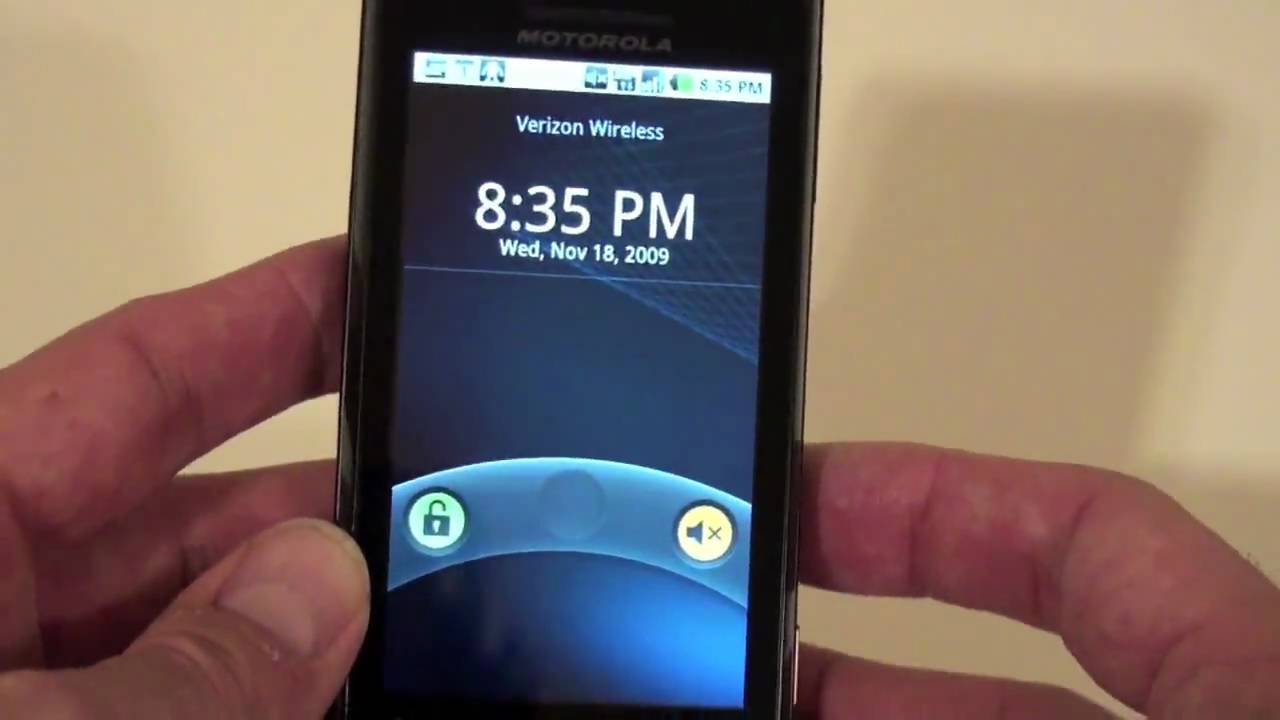
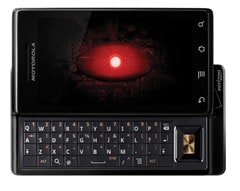
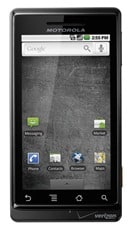
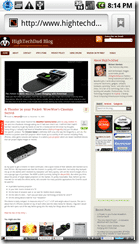
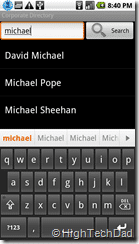

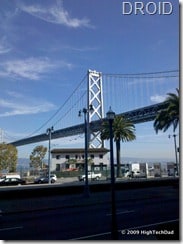
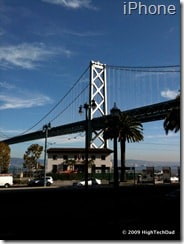
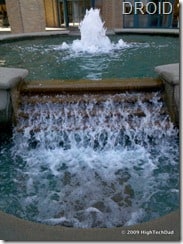

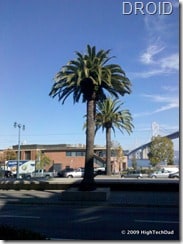
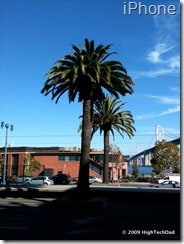
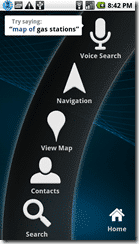
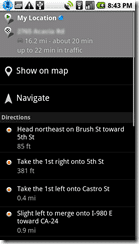
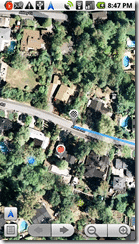
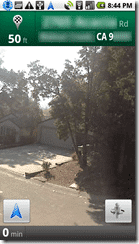
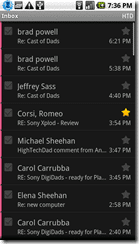
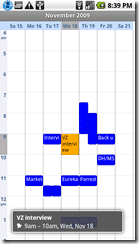
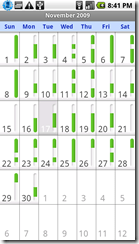
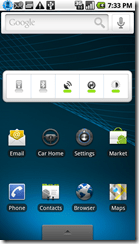


16 comments
Ving
I currently use Sony Ericsson Xperia X1, which has QWERTY keyboard and it’s really amazing to use on the phone but I’m thinking of upgrading to a touch screen based phone. I’m thinking either the iPhone 4, Samsumg S or HTC Desire but I think I might miss the physical keyboard.
hightechdad
I really think that cell phones are personal choices. Personally, I like onscreen keyboards but there are people who do not. I want to test out the new Droid as they have refined the phone considerably. I am an avid iPhone user so I’m a bit biased. The new blackberry Torch has a nice combination of touchscreen and slideout keyboard like the Palm. Best thing is to test them out at a store if you can.
Ving
Great review. I personally like the feel of a physical keyboard rather than using touch screen to compose a message. Do you would you recommend getting this phone over an iPhone 4 or HTC Desire?
Guest
http://www.proxy4free.com/page1.html
SigSoldat
One of the greatest weaknesses with the Droid is the lack of native sync capability. HOWEVER, Motorola provides free sync software that will sync all your data, including music. The iPhone also requires download of iTunes, so neither of them syncs without additional software.
I've been impressed with the iPhone since it's release, but one thing that always bugged me was the lack of a good signal. I traveled a lot with the military and my iPhone buddies always dropped calls, sounded terrible, or couldn't access their cool features due to lack of coverage in our traveling area. I've been with Verizon for over ten years and have tried switching to other carriers a couple times just to get a cool phone, but I've always returned quickly because nobody compares when it comes to coverage. The Droid finally provides the features I'm looking for on a network that provides enough coverage to make it useful.
Christmas is coming and I've only got one thing on my list: the Droid!!!
SigSoldat
One of the greatest weaknesses with the Droid is the lack of native sync capability. HOWEVER, Motorola provides free sync software that will sync all your data, including music. The iPhone also requires download of iTunes, so neither of them syncs without additional software.
I've been impressed with the iPhone since it's release, but one thing that always bugged me was the lack of a good signal. I traveled a lot with the military and my iPhone buddies always dropped calls, sounded terrible, or couldn't access their cool features due to lack of coverage in our traveling area. I've been with Verizon for over ten years and have tried switching to other carriers a couple times just to get a cool phone, but I've always returned quickly because nobody compares when it comes to coverage. The Droid finally provides the features I'm looking for on a network that provides enough coverage to make it useful.
Christmas is coming and I've only got one thing on my list: the Droid!!!
hightechdad
I could have written about twice as much as I did. So to answer your questions:
– Podcasts – you need to download an app for the syncing of podcasts (I can't remember the name of it)
– Videos – you simply drag the videos or music over to the appropriate folder, once you have mounted the Droid as a USB device
– DVDs – see above, you first first need convert it to the appropriate folder and then move it over.
– XM radio – there is probably an app in the Android store for that, or you can stream radio stations
– Mac sync – well you probably want to do everything through google.
Honestly, I would totally buy the Droid if I wasn't an iPhone guy and locked into AT&T. Hope I answered your questions.
David
You missed the half of what is so nice about the iphone, and it's not clear to me if the Droid
Does it.
Video Podcasting and easy sync of.
How easy is it to load all my music videos and watch them.
I want to load, play my fav dvd's on the phone ?
Can I listen to XM radio on this device like the Iphone ?
Good sync with my Mac ? calendars ? Contacts ? Music ? Videos ? Email ? Photos ?
okay OR ON a PC perhaps you said it best. IF the Iphone was not around. it bugs, all of the reviews I read pretty much neglect the above mentioned.
hightechdad
That is true if you use Google products (Gmail & Calendar) for your email and calendaring solutions. If you do, then it is simply syncing from what Google has stored online. I agree that with the iPhone it is similar for those (e.g., if you use your own calendaring and email accounts, iTunes can only save your settings for that, not the actual information). However, if you download a bunch of applications, from what I can tell, you cannot back up those purchases or free apps as elegantly as you can with the iPhone. I'm sure that things will get better, but for now, the iTunes store has the leg up on that process.
Dmoney
His backup post is way wrong. The droid backsup all your contacts and calendar automagically over the air to your google account. No need for wires.
hightechdad
Thanks! I had fun with it. Be sure to spread the word on the review.
franwhite
This is THE BEST information and demo I've seen anyone do on the Droid. Thanks so much!
hightechdad
Thanks Bryan,
Yes, you are right about how well it does sync with your Google Accounts. That is your online-backup (like MobileMe) I guess. I know Missing Sync well, although I haven't had to use it yet. I always recommend multiple backup types (local and online/cloud). Yes, and the Facebook sync is really cool, something that the iPhone doesn't have (yet).
I appreciate the comments! Weird about that rounding error bug.
Bryan Sherman
Great review. The camera should be getting better, they are updating the firmware. One issue was a bizarre rounding error that caused focusing problems only certain days. It is something like 24 days bad, then another 24 days good.
On data backup, I get the music/photo/video issues you raise, but I think you should also point out the inherent backing up of contacts/mail/calendar. I also received a Droid, and an Eris for review. I already have a G1 and it was stunningly easy how quickly my new (if temporary) phone had all my contacts, gmail and calendar.
Also, if you use Facebook, the ability to sync contacts in Facebook with your phone was very nice. I could see my facebook friends info, and their avatars could be used in my contact list.
One last, last thing, Mark/Space has a beta version of their Missing Sync for Android that will help with the other backup issues.
hightechdad
Hi Heather,
Thanks for the comment back. While I was only able to test out the Droid for about a week, I did see some of those “phantom” email notifications. Sometimes I think it is playing catch-up with your email. Do you check on various devices/computers? Are they Exchange or IMAP? That is the first thing that comes to mind. Are you using Corporate Email/Calendaring or are you talking about “consumer” (e.g., Gmail/Google Calendar). Syncing is a complicated service, especially, as I said, if you have it hooked up to different computers. You might want to do what VZ says and remove the account and re-add it. I had that issue with iCal on my Mac when it was syncing my Google Calendar. Just removing and adding back (re-authentication) helped out.
I haven't heard of any lemons but since the device is so new (as it the Android OS 2.0), there are sure to be bugs in it.
Let me know how it goes!
heatherkmargolis
High Tech Dad, thanks so much this is a great review. I'm one of those who bought in and stayed up until 12:01 a.m. to be the first to order a Droid and though I absolutely LOVE most of “extra” features, I'm having issues (and am not the only one) with some of the standard features that have to work well or I'm back to my Blackberry (too in love with Verizon to switch to the iPhone though I am a mac user). Issues include it lets me know I have “new” emails even when I don't. In other words, if I don't mark everything “read” it continues to give me an email notification every 15-30 minutes. While “Droooiiiiiddd” sounds cool/funny the first few times, 100 times a day is enough to send me over the edge. Also, my emails account and calendar accounts occasionally stop synching. Verizon's answer “uninstall and reinstall the account. Ummmm, no, how about that?
Other than that I love it but if the fundamentals don't work we have a problem! Have you heard anything or do I have a lemon (like the 2 other people I know having the same issues)?